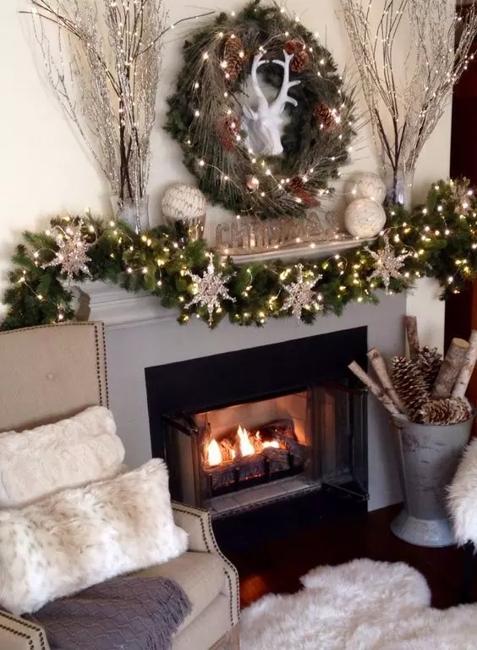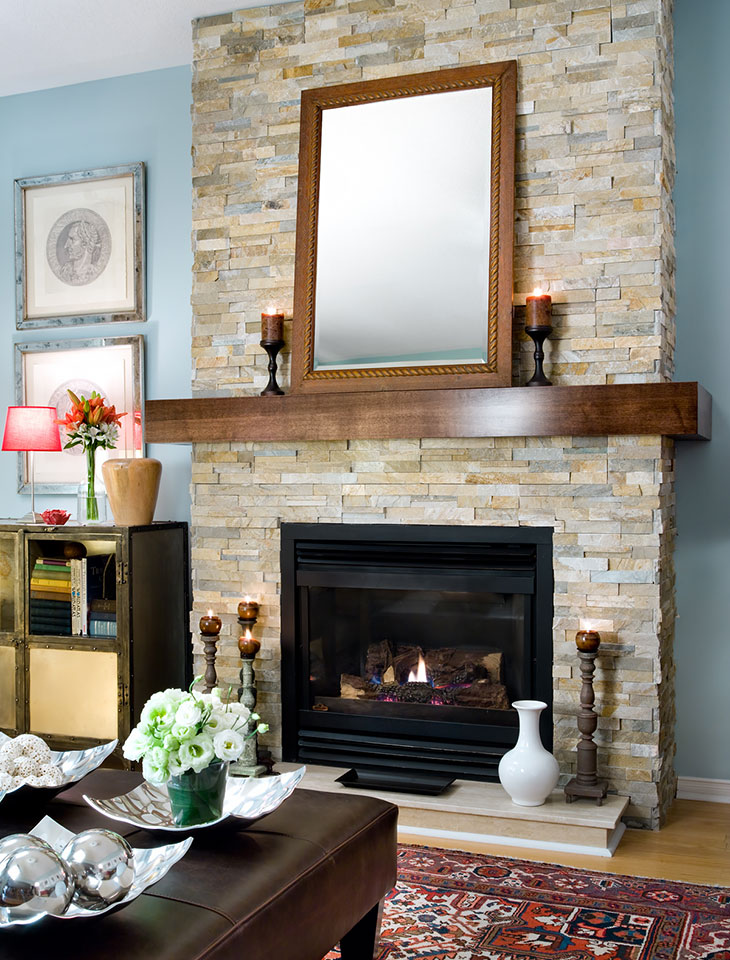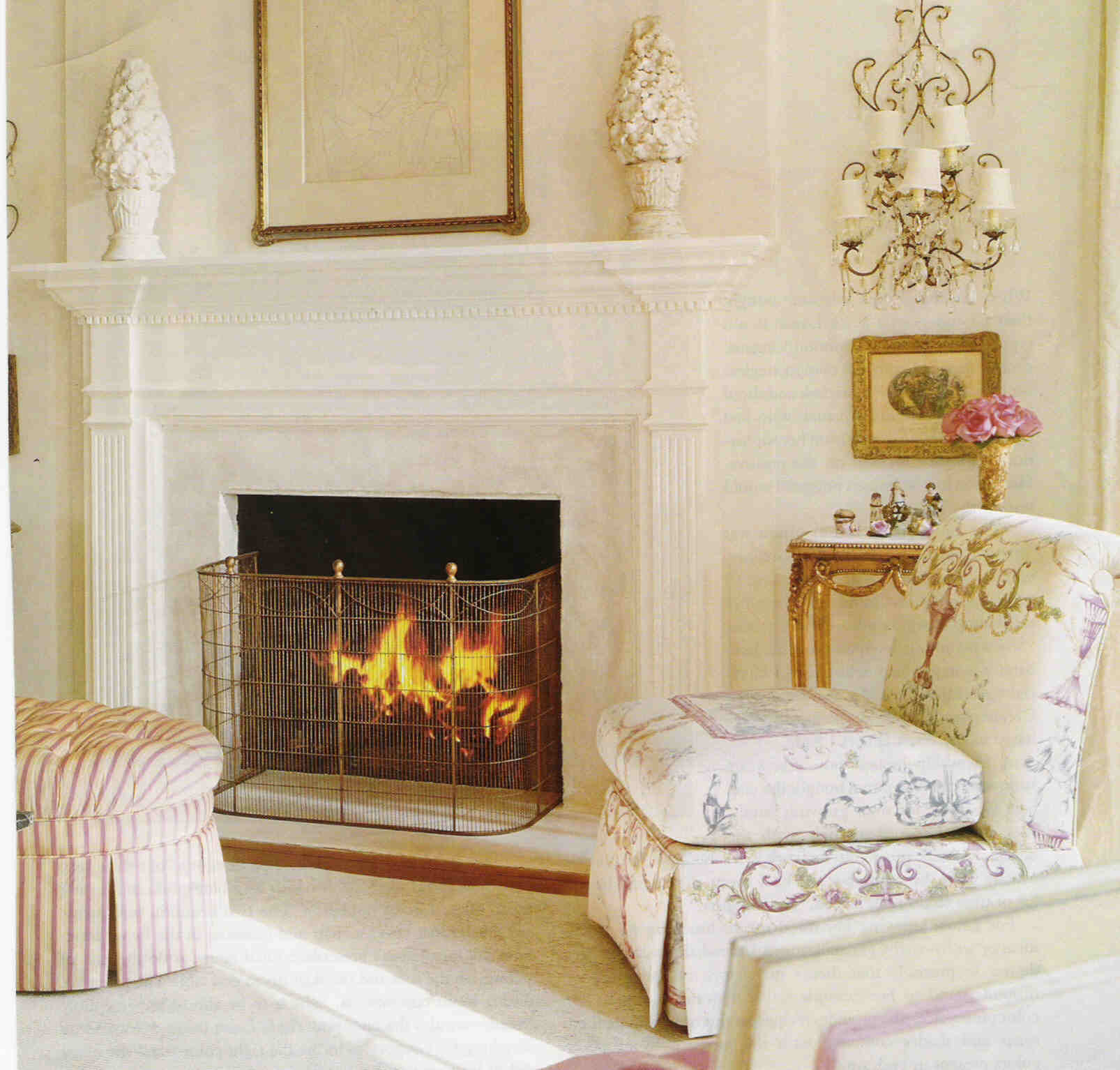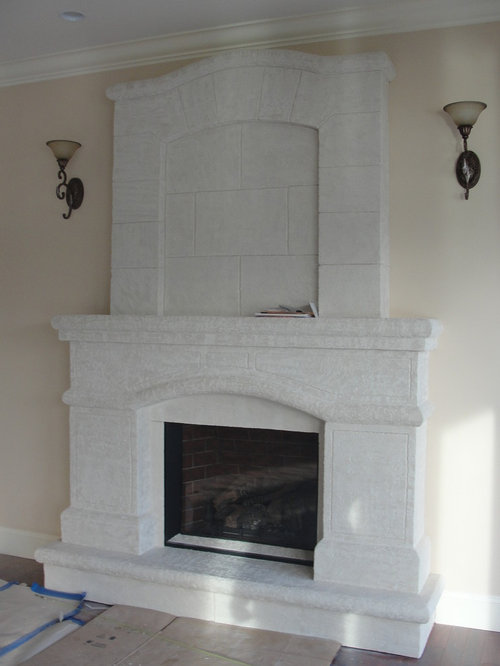Traditional fireplace mantels serve as architectural centerpieces that anchor living spaces with classic elegance. These designs typically feature symmetrical proportions, intricate moldings, and substantial presence above the firebox. Common materials include solid wood, marble, or stone, often with hand-carved detailing. The mantel shelf provides both functional display space and visual balance to the fireplace surround. Traditional styles range from formal Georgian designs with fluted columns to rustic Tudor beams with hammered iron accents. Each variation reflects historical craftsmanship while adapting to modern interiors.
Wood remains the quintessential material for traditional mantels, offering warmth and versatility. Dark walnut or mahogany stains create rich, formal statements in traditional parlors. Painted white or cream mantels brighten spaces while showcasing detailed millwork. Distressed finishes add antique charm to country-style homes. Carved floral motifs, acanthus leaves, or egg-and-dart patterns demonstrate skilled woodworking. These wooden mantels often incorporate built-in cabinetry or bookshelves flanking the fireplace for added functionality. The natural material ages gracefully, developing character over generations.

Classical architectural elements define traditional mantel designs. Dentil molding—small rectangular blocks resembling teeth—adorns many neoclassical mantels. Broken pediments create dramatic crowns above the firebox. Pilasters or engaged columns frame the opening with vertical emphasis. Corbels beneath the shelf add structural illusion and decorative interest. These historical references connect modern homes to centuries of fireplace design traditions. Proportion remains crucial, with mantel heights and depths carefully calculated to harmonize with room dimensions.
Stone mantels bring natural grandeur to traditional settings. Limestone surrounds with carved foliate patterns suit French country homes. Marble mantels with veined splendor elevate formal living rooms. Stacked slate creates rustic English cottage appeal. Stone’s permanence and thermal properties make it both beautiful and practical. Many traditional stone mantels feature arched openings or carved crests that reflect regional architectural heritage. The substantial material requires proper structural support but becomes an enduring legacy feature.

Mantel styling completes the traditional fireplace presentation. Symmetrical arrangements of candlesticks, clocks, or porcelain vases reinforce classical balance. Framed portraits or landscapes above the mantel continue the formal aesthetic. Seasonal garlands or evergreen swags add organic softness to the structured design. The mantel becomes a stage for displaying cherished objects that reflect personal taste within the traditional framework. This careful curation transforms the fireplace into a dynamic focal point that evolves with the seasons.
Historical influences shape regional mantel variations. American Federal style favors delicate reeding and oval motifs. British Victorian designs showcase high shelves with elaborate spandrels. Mediterranean interpretations incorporate arched niches and terra cotta accents. These geographical distinctions allow homeowners to reference specific design lineages while maintaining traditional sensibilities. Researching period-appropriate details ensures authentic recreations of historical styles.

Construction techniques affect both authenticity and durability. Traditional joinery methods like mortise-and-tenon connections ensure longevity. Solid wood construction prevents warping that can occur with veneered products. Hand-carved elements demonstrate artisanal quality that machine reproductions can’t replicate. Professional installation guarantees proper weight distribution and heat clearance. These craftsmanship considerations separate heirloom-quality mantels from mass-produced alternatives.
Paint and finish choices dramatically alter a traditional mantel’s character. High-gloss enamel creates formal grandeur in dining rooms. Chalky matte finishes suit shabby-chic interiors. Distressing techniques reveal underlying wood tones for antique appeal. Gilding highlights specific carvings with metallic accents. The finish should complement both the fireplace surround and overall room palette. These surface treatments personalize standard designs while maintaining traditional bones.

Scale and proportion ensure visual harmony. The mantel width should exceed the firebox by at least 12 inches on each side. Shelf depth must balance display needs with traffic flow. Height proportions traditionally follow classical orders, with the mantel occupying the lower third of the wall space. Oversized rooms can accommodate monumental designs with multiple shelves or extended piers. Proper scaling makes the mantel feel integral rather than imposed.
Modern adaptations keep traditional mantels relevant. Integrating concealed media compartments maintains period aesthetics while accommodating technology. Energy-efficient inserts fit within original openings to improve heating performance. LED candlelight replicates flame effects without maintenance. These thoughtful updates allow traditional designs to meet contemporary lifestyles while preserving their timeless appeal. The best traditional mantels bridge past and present, creating gathering spots that feel both historic and welcoming.

Fireplace mantel design ideas

Fireplace Mantel Designs – Connecticut in Style

Fireplace Mantel Designs – Connecticut in Style

Fireplace Mantels

Brick Fireplaces: Beautiful Brick Fireplace Design Pictures

Contemporary Mantels Dress up Fireplaces – Design The Space

Related Posts: